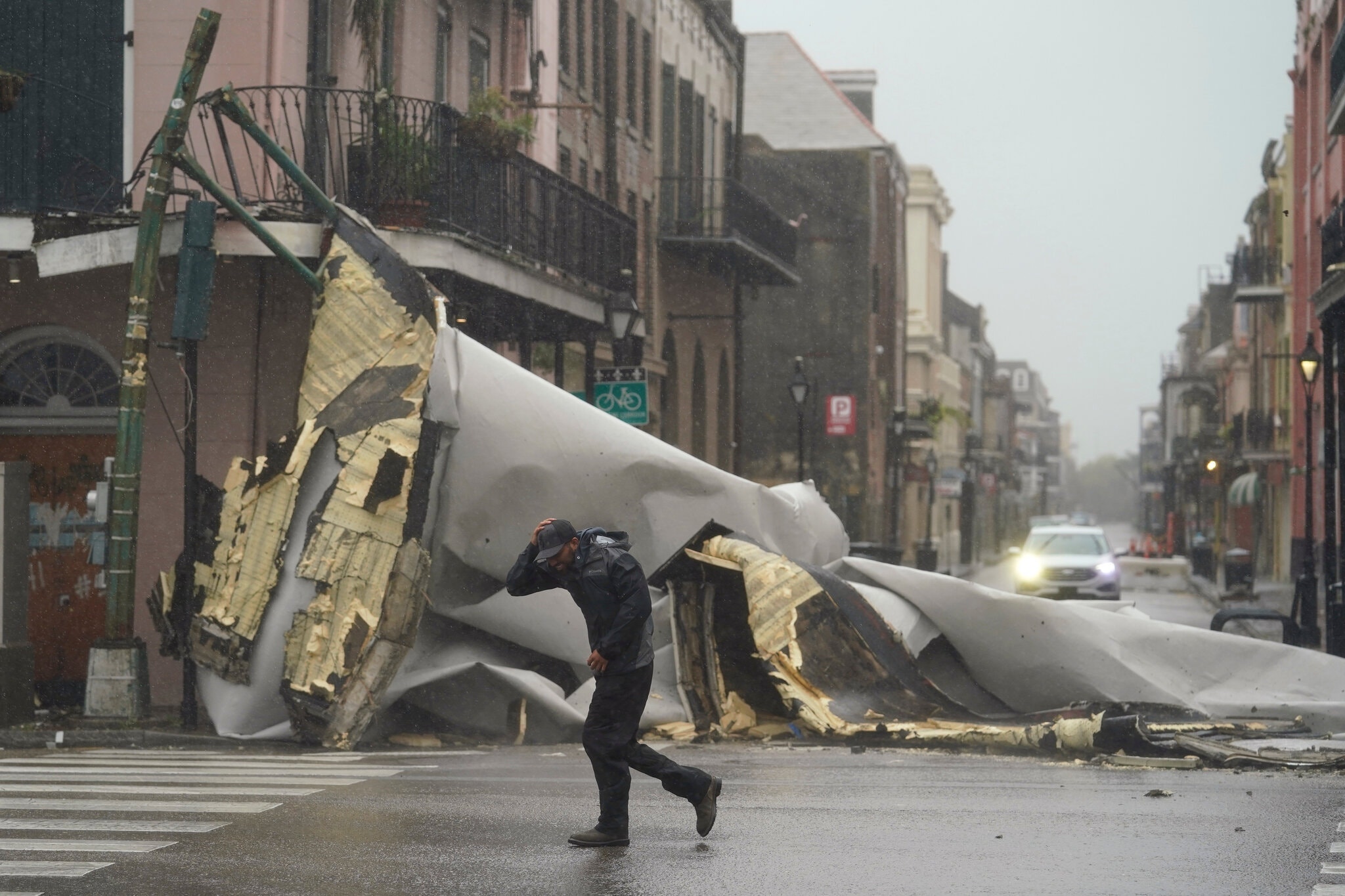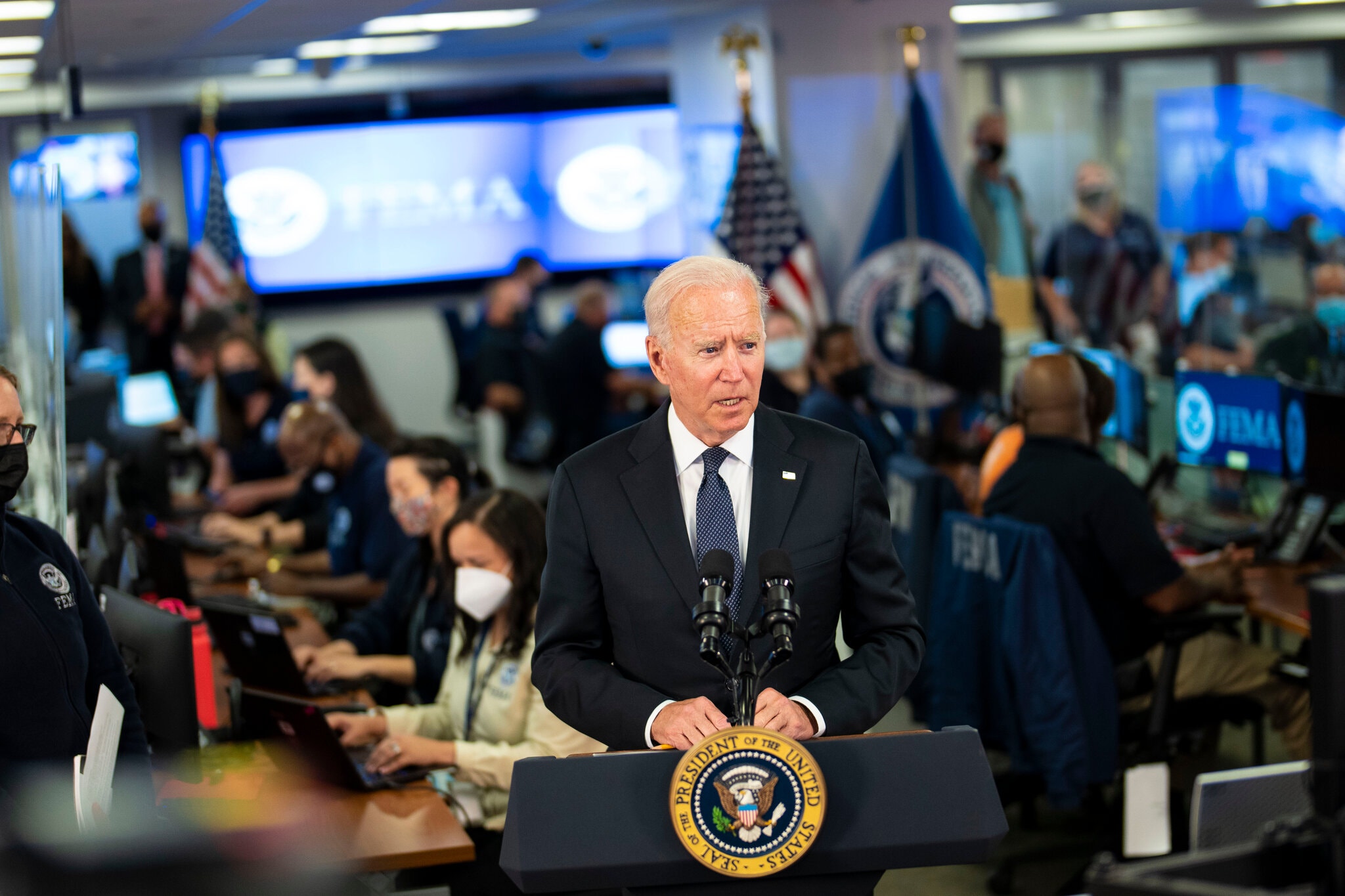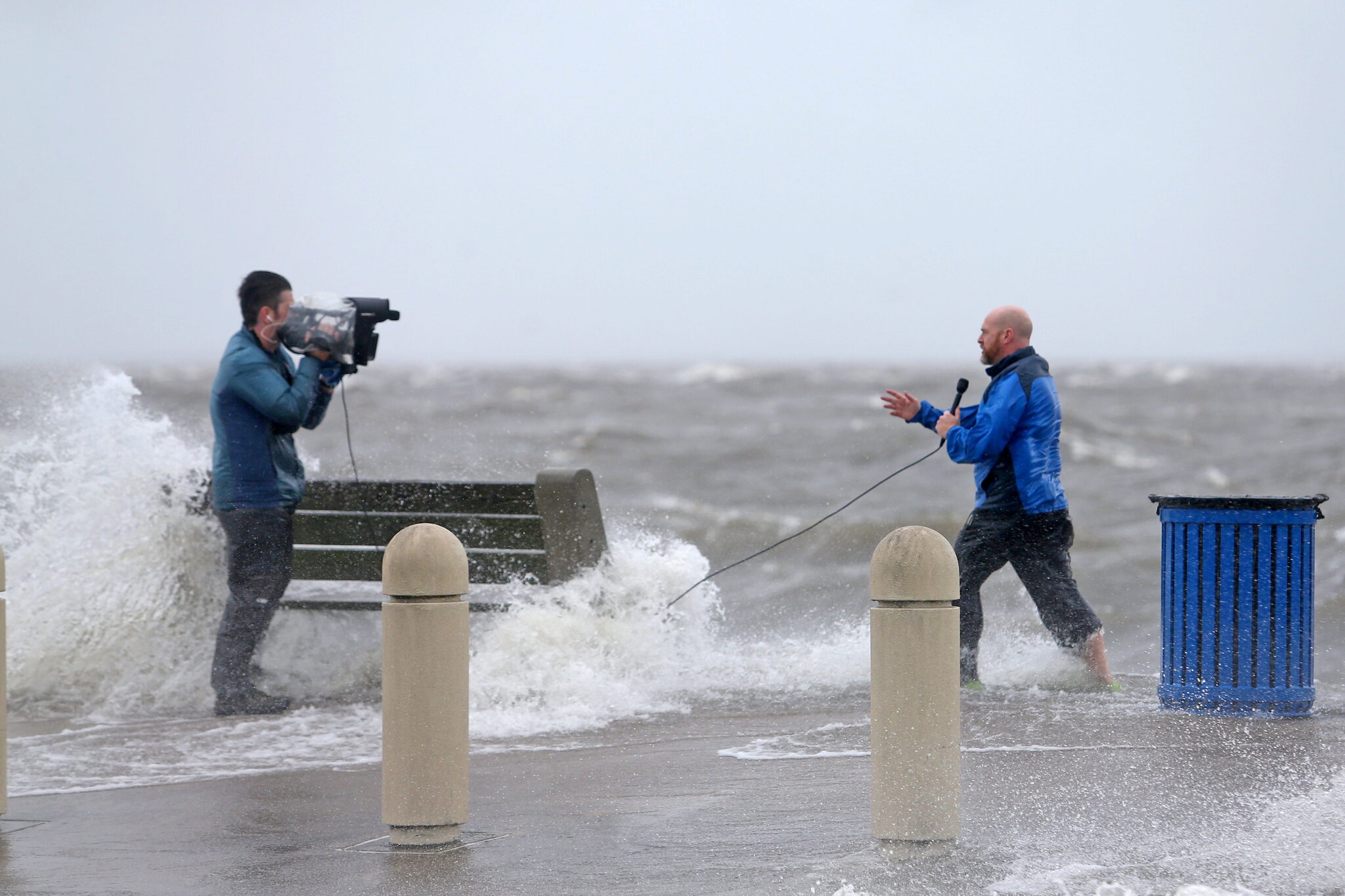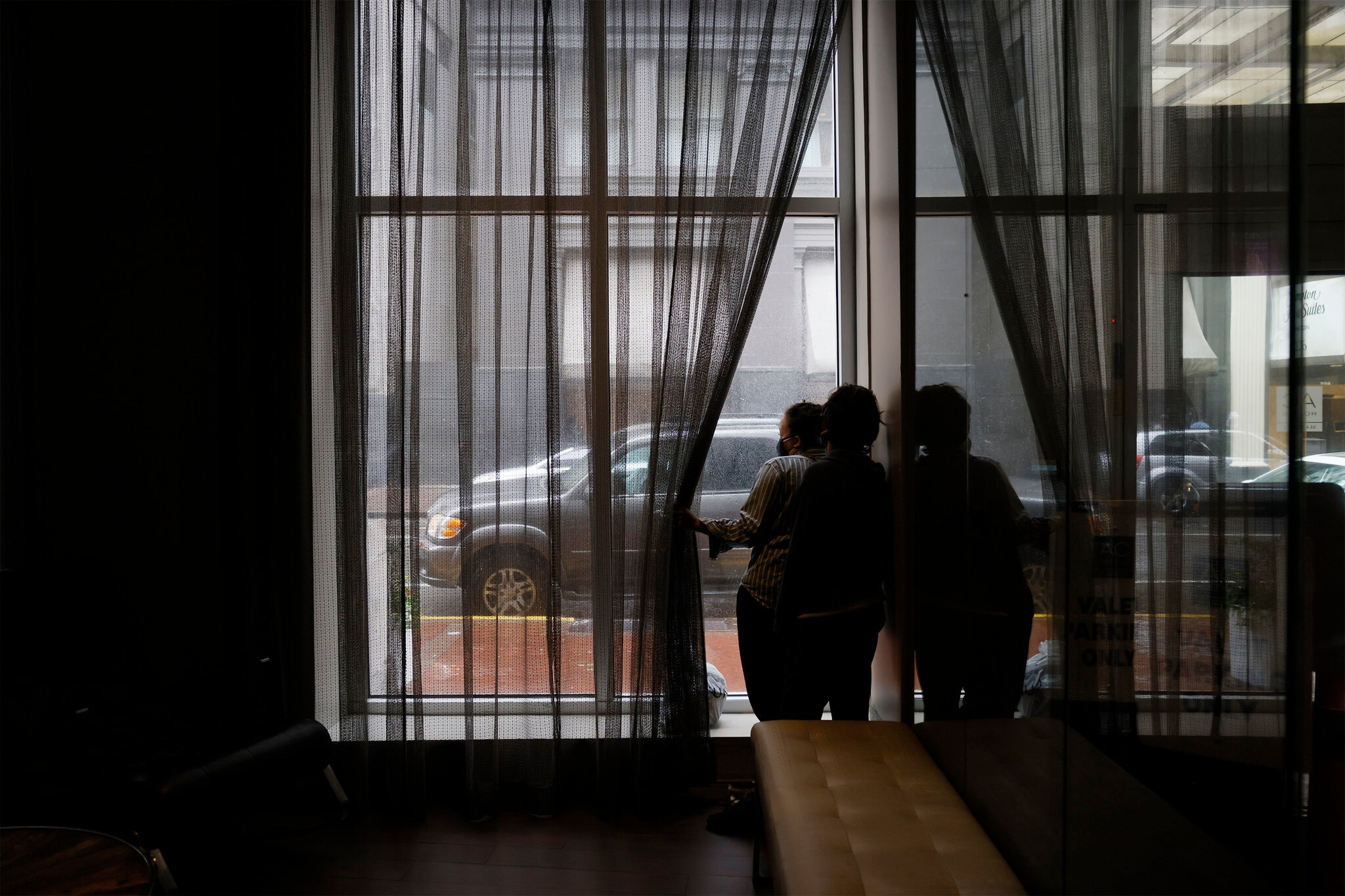
NEW ORLEANS — Hurricane Ida howled into Louisiana on Sunday with powerful winds and dangerously high storm surges, lashing coastal communities, battering New Orleans and putting the city’s system for resisting catastrophic flooding to its biggest test since Hurricane Katrina.
Arriving 16 years to the day since that storm devastated New Orleans, Hurricane Ida sent residents fleeing east and west out of its path on jammed roadways across Louisiana. Those who remained — by choice or by circumstance of the fast-arriving storm — endured maximum winds that reached 150 miles an hour, just shy of Category 5 intensity.
The storm made landfall shortly before noon, earlier than expected and only days after it became a named hurricane. Its rapid strengthening amazed meteorologists and left officials and Gulf Coast residents with little time to prepare.
“This is one of the strongest storms to make landfall here in modern times,” Gov. John Bel Edwards of Louisiana said in a briefing on Sunday afternoon.
President Biden, speaking at the Federal Emergency Management Agency’s headquarters on Sunday, said that “the devastation is likely to be immense” and promised that “as soon as the storm passes, we’re going to have the country’s full might behind the rescue and recovery.”

White-capped waves appeared on the Mississippi River as winds uprooted trees, tore roofs from buildings and knocked out power for hundreds of thousands across the state. Storm surges inundated areas of the coast from Burns Point, west of New Orleans, to around Biloxi, Miss. Floodwaters threatened inland communities such as greater Baton Rouge, in Louisiana.
Winds of up to 82 miles per hour, with gusts of up to 138 miles per hour, spread inland all through the afternoon. Ida weakened to a Category 2 storm by late Sunday night with maximum winds of 105 miles per hour.
By nightfall, Entergy, a major power company in Louisiana, texted residents that all of New Orleans was without power because of “catastrophic transmission damage.”
With the brunt of the storm passing through the city Sunday night, it was impossible to determine the full extent of destruction and potential loss of life. But scenes and reports from across the region were not promising.
“It’s been an experience, the roughest I’ve ever seen it,” said Anthony Rodrigue, 62, who has never evacuated his home in Houma, La., for a storm. “There’s so many sheets of rain, I can’t even see across the street from my house.”
The National Hurricane Center said that by Monday, the storm will have drenched the Gulf Coast with an estimated eight to 16 inches of rain, and perhaps as much as 20 inches in some places.
Heavy rainfall and flooding were expected across several states into the week as the hurricane and its remnants moved toward the Northeast.
In a sign of the storm’s strength, water overtopped at least one levee in Plaquemines Parish, southeast of New Orleans, by late afternoon. Officials had expected some water to rise above levees, cautioning that it was not a sign of their failure. Still, local officials urged nearby residents to “seek higher ground immediately.”
Hurricane Ida presented a second severe crisis to a state already in the throes of one of the worst coronavirus outbreaks in the nation.

Covid-19 deaths in Louisiana have climbed to their highest levels of the coronavirus pandemic. Hospitals, already filled or near capacity by a surge of Covid-19 patients, scrambled on Sunday to manage operations during the storm as evacuations were no longer possible. The storm blew portions of the roof off one hospital outside New Orleans, Lady of the Sea General Hospital.
New Orleans suspended its emergency medical services shortly before noon because of high winds, saying in a statement that operations would resume “once it is safe.”
“Nobody should be expecting that tonight a first responder is going to be able to answer a call for help,” the governor said, underscoring that residents who had not already left needed to stay in their homes.
Officials have expressed confidence that efforts to harden levees and flood systems around New Orleans after Hurricane Katrina would be enough to hold back storm surges. But, the governor said, the same might not be the case in other areas of the state, where the infrastructure “is not built to that same standard.”
Inside the French Quarter, Kisha Shorter held out hope that the storm would blow over quickly, even as the wind rattled outside.
“It’s been real disrespectful,” she said of the wind. “Even though I have my storm shutters bracketed closed, it still was shaking and blowing.”
Ms. Shorter, who lives above the bar she tends, remained hopeful that she could open the bar late Sunday after the storm passed. “We’ll see how it goes,” she said.
Even before it arrived, the storm stirred painful reminders in New Orleans of the death and devastation wrought by Hurricane Katrina in 2005, which left psychological scars that still run deep in the city. The storm killed 1,833 people, inflicted more than $100 billion in damage and submerged large stretches of New Orleans, leading to scenes of suffering that horrified the nation and stunned the world.

The trajectory and strength of Hurricane Ida presented a high-stakes test of the levees, flood walls, pumps and gates that were reinforced around New Orleans after Hurricane Katrina.
The city is now protected by a storm-surge barrier so large that it can be seen from space, and a network of drainage canals have gates at Lake Pontchartrain that keep water from entering. The soil along 50 miles of levees was also removed, mixed with cement and put back, reinforcing each protective wall.
Officials believe hundreds of thousands of people left the metropolitan area in advance of the storm, but many people remained, sheltering in place.
Carl Duronslet recalled spending three days trapped in an overpass in New Orleans during Hurricane Katrina. Still, he said, he decided to stay put as Hurricane Ida approached his home in New Iberia, La.
“I have survived storms for 51 years,” Mr. Duronslet said. “I’ll survive this one, too.”
The storm intensified quickly in large part because the water in the Gulf of Mexico is very warm, and warmer water provides more energy to storms. The Gulf is normally warm in late summer, but research over the past decade suggests that climate change also plays a role in the increased frequency of rapidly intensifying Atlantic hurricanes.
Meteorologists said that the route taken by the storm, which had hovered in an area where the wind wasn’t fast enough to carry the ocean’s heat, created the conditions for a uniquely fast-worsening storm. “It would have been hard to concoct a path more favorable to this rapid strengthening than Ida’s,” said Robert Henson, an independent meteorologist and a journalist for Yale Climate Connections.
Oceans are generally warming as a result of human-caused emissions of greenhouse gases, studies have shown, making the rapid intensification of hurricanes more frequent. In Hurricane Ida’s case, it became a Category 4 hurricane only an hour after it first reached Category 3 status.
The impact of this hurricane underscored the persistent peril facing coastal communities as a changing climate helps intensify the destructive force of the storms that have always been a seasonal part of life in the region.

Louisiana was already struggling to claw its way back after a particularly active and destructive hurricane season in 2020. Governor Edwards has said that $3 billion in recovery needs remain unmet from last year.
Hurricane Ida significantly disrupted the energy infrastructure along the coast, forcing oil and gas companies to shut down over 90 percent of production in the Gulf of Mexico. Workers were evacuated from offshore platforms. The Colonial Pipeline, which delivers transportation fuel from Texas to New York, said on Sunday that it had temporarily shut down some of its network.
In New Orleans, the force of the winds ripped boats from their moorings along the coast and on the Mississippi River.
“A ferry broke loose on the river,” Kelli Chandler, the regional director of the Southwest Louisiana Flood Protection Authority East, said after an emergency call came in on Sunday afternoon. Her staff called the U.S. Coast Guard and checked river cameras to see where the ferry was. They located it downriver from New Orleans, near Jackson Barracks.
Though there was no traffic on the Mississippi River, unmoored vessels during a storm can ram into levees, causing damage. As soon as the winds fall below hurricane levels, a tug will be dispatched to bring the ferry back to safety. But for the moment on Sunday, it floated free.
As night fell, many in New Orleans lit their homes with candles or flashlights.
Samantha Egana was amazed that she still had power at her house in the Gentilly neighborhood of New Orleans hours after the storm had arrived. “Nobody else has lights,” Ms. Egana, 56, said. “My daughter Uptown, no lights. My other daughter in the East, no lights.”
In 2005, Ms. Egana walked in water up to her chest to hail boats to come to her house to save her children and her grandchildren, including her grandson Moses, who was only 3 months old at the time.
“This is not Katrina,” she said as she looked outside her window. She deemed the rain and wind bearable, adding that the water was “steady pouring down but it’s not building up.”
“It’s going to pass,” she said. “It’s going to be all right.”
Reporting was contributed by Henry Fountain, Richard Fausset, Rick Rojas, Tariro Mzezewa, Edgar Sandoval, Giulia Heyward, Eduardo Medina, Sophie Kasakove, E. Justin Swanson and Jesus Jiménez.